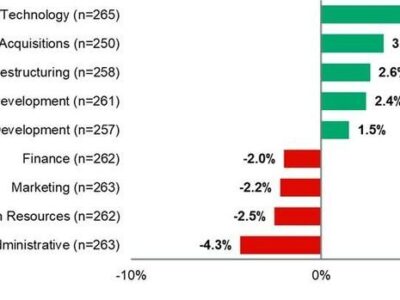Early and ongoing engagement will help gain the confidence of business leaders in data quality.
Poor data quality destroys business value. Recent Gartner research indicates that the average financial impact of poor data quality on organizations is $9.7 million per year.
This is likely to worsen as information environments become increasingly complex. Data quality issues are faced by organizations of all sizes and complexity. Those with multiple business units and operations in several geographic regions with many customers, employees, suppliers and products will inevitably face more severe data quality issues.
Gartner research indicates that the average financial impact of poor data quality on organizations is $9.7 million per year.
Speaking ahead of the Gartner Data & Analytics Summit in Sydney in February, Saul Judah, research director at Gartner, said, “Poor data quality contributes to a crisis in information trust and business value, such as financial and operational performance. Unless tangible and pragmatic steps are taken to understand, address and control data quality, the situation will worsen.”
Many organizations struggle to successfully propose a program for sustainable data quality improvement. Effective business engagement and funding may be limited for several reasons:
- The value to the business may be unclear.
- No understandable connection might be evident between data quality improvement and business outcomes.
- The business may not understand the importance of their role in data quality improvement.
“A business case for data quality improvement must start and end with the business outcome. The business case should demonstrate how any improvement in the underlying data creates better business outcomes,” said Mr. Judah.
Gartner has identified five steps to creating a business case for data quality improvement:
1. Understand the top business priorities and find the right place to start
If a business case is to be taken seriously, it must be presented in the language of the business and speak to the critical and specific business priorities of key stakeholders. Understanding the business vision will not only enable you to identify senior-level support for your business case, but also help to identify and engage the right level of senior business sponsorship.
2. Select business performance metrics to support the right business outcomes
Ironically, one of the main reasons for unsuccessful business cases for data quality improvement is because they focus on data quality. Successful business cases address the key components necessary to achieve the business vision, such as financial performance, operational performance, legal and regulatory compliance and customer experience.
3. Profile the current state of data quality and its business implications
Once the scope of the business case has been agreed on, initial data profiling can begin. Data profiling should be carried out early and often. Establishing a benchmark at the initial level of data quality, prior to its improvement, will make it easier to objectively demonstrate the causal impact on business value after improvement and justify later requests for further funding.
4. Describe the target state to achieve business improvements
Business leaders sometimes struggle to understand that data quality improvement is not a “once-and-done” activity. It’s very important to make it clear that unless a sustainable environment for data quality improvement is established, it will rapidly revert to its original poor state. The target state for data quality must be described in terms of how it can positively and sustainably improve critical business metrics such as financial results.
5. Estimate the financials for the business case
A “go” or “no-go” decision for business case proposals often comes down to the financials, and this is no different for data quality improvement. A good business case must identify the anticipated benefits of the initiative and must be tangible, quantifiable and desirable to the stakeholders.
Get Smarter
Client Research
More information is available to Gartner clients in the report: “Five Steps to Creating a Business Case for Data Quality Improvement.”
Gartner Data & Analytics Summit
Gartner analysts will provide additional analysis on data and analytics leadership trends at the Gartner Data & Analytics Summit 2017, taking place February 20-21 in Sydney, March 6-9 in Grapevine, Texas, March 20-22 in London, March 23-24 in Tokyo and June 20-21 in Sao Paulo, Brazil. Follow news and updates from the events on Twitter using #GartnerDA.
Data and Analytics Hub
Visit Gartner’s Data and Analytics hub for complimentary research and webinars.










